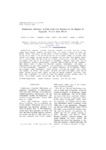Por favor, use este identificador para citar o enlazar este ítem:
http://www.alice.cnptia.embrapa.br/alice/handle/doc/313914Registro completo de metadatos
| Campo DC | Valor | Lengua/Idioma |
|---|---|---|
| dc.contributor.author | NUNES, D. H. | pt_BR |
| dc.contributor.author | PASINI, A. | pt_BR |
| dc.contributor.author | BENITO, N. P. | pt_BR |
| dc.contributor.author | BROWN, G. G. | pt_BR |
| dc.date.accessioned | 2011-04-10T11:11:11Z | pt_BR |
| dc.date.available | 2011-04-10T11:11:11Z | pt_BR |
| dc.date.created | 2008-04-17 | pt_BR |
| dc.date.issued | 2006 | pt_BR |
| dc.identifier.citation | Caribbean Journal of Science, v. 42, n. 3, p. 331-338, 2006. | pt_BR |
| dc.identifier.uri | http://www.alice.cnptia.embrapa.br/alice/handle/doc/313914 | pt_BR |
| dc.description | Little infonnation is available on earthwonn distribution and diversity in the State of Paraná, southern Brazil, Earthwonn abundanee and species diversity was evaluated in four land use systems near [aguapítã, (Paraná); where pastures are being eonverted to soybean and sugarcane. Samples were taken during the rainy and dry seasons of 2004 and 2005 in eight sites: two old degraded pastures, an old pasture being eonverted to row eropping, two grain erop fields, two sugareane fields and a native forest fragmento Twentyfive 25 x 25 em soil bloeks were taken at eaeh síte, 20 of them to 10 em and five to 30 em depth. Earthwonns were manually sorted from the soil and preserved in fonnaldehyde. Earthwonn species found were: the exotics Pontoscolex corethrurus (Glossoscolecidae), Dichogaster affinis, D. bolaui and D. saliens (Acanthodrí- Iidae), Eukerria saltensis, E. eiseniana and Ocnerodrilus occidentalis (Ocnerodrilídae), and Amynthas sp. (Megascolecidae): the native species Glossoscolex n. sp. and Fimoscolex n. sp. (Glossoscolecidae), Belladrilus n. sp.l and an unidentifiable Oenerodrilidae n, sp.l (probably Belladrílus); and two unidentified Eukerria spp. (of unknown origin) (Oenerodrilidae). Pasture eonversion to row erops had a negative effect on earthwonn abundanee and diversity: fewer individuais and species were found in the eropping systems than the pastures. The forest was not a suitable referenee site, having low earthworm populations and diversity. Exotie species tended to predominate in the land use systems near [aguapítã, but native earthworm species still survived, even in degraded pastures and row erops, many years after deforestation. | pt_BR |
| dc.language.iso | eng | eng |
| dc.rights | openAccess | eng |
| dc.subject | Espécie exótica | pt_BR |
| dc.subject | Agroecossistema | pt_BR |
| dc.title | Earthworm diversity in four land use systems in the region of Jaguapitã, Paraná State, Brazil. | pt_BR |
| dc.type | Artigo de periódico | pt_BR |
| dc.date.updated | 2015-02-25T11:11:11Z | pt_BR |
| dc.subject.thesagro | Biodiversidade | pt_BR |
| dc.subject.thesagro | Espécie Nativa | pt_BR |
| dc.subject.thesagro | Minhoca | pt_BR |
| dc.subject.nalthesaurus | Oligochaeta | pt_BR |
| riaa.ainfo.id | 313914 | pt_BR |
| riaa.ainfo.lastupdate | 2015-02-25 | pt_BR |
| dc.contributor.institution | Daiane H. Nunes, UEL; Amarildo Pasini, UEL; Norton Polo Benito, UEL; George Gardner Brown, Embrapa Florestas. | pt_BR |
| Aparece en las colecciones: | Artigo em periódico indexado (CNPF)  | |
Ficheros en este ítem:
| Fichero | Descripción | Tamaño | Formato | |
|---|---|---|---|---|
| Earthwormdiversityinfourlandusesystems.pdf | 63.07 kB | Adobe PDF |  Visualizar/Abrir |









